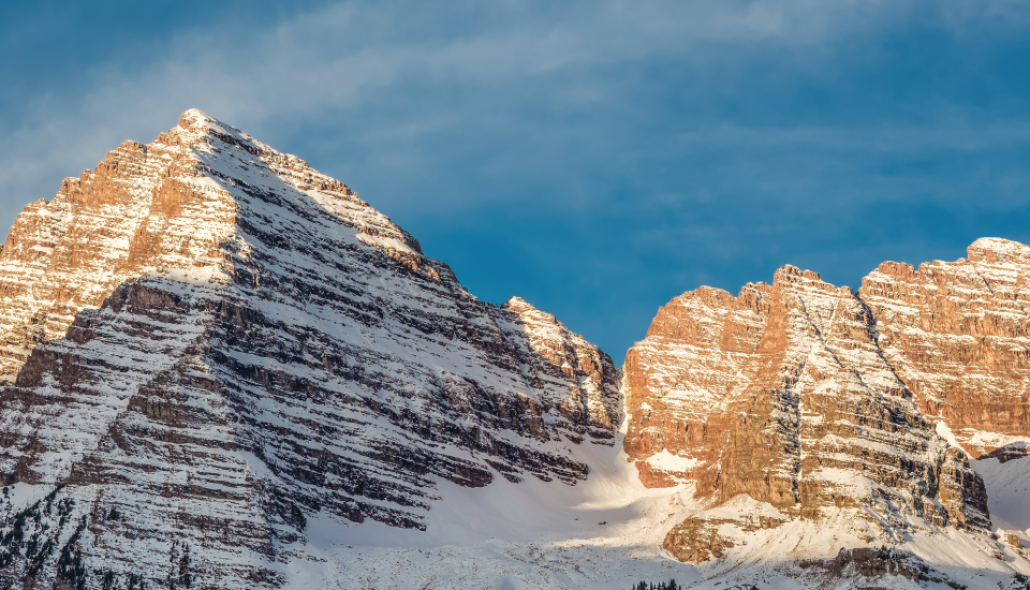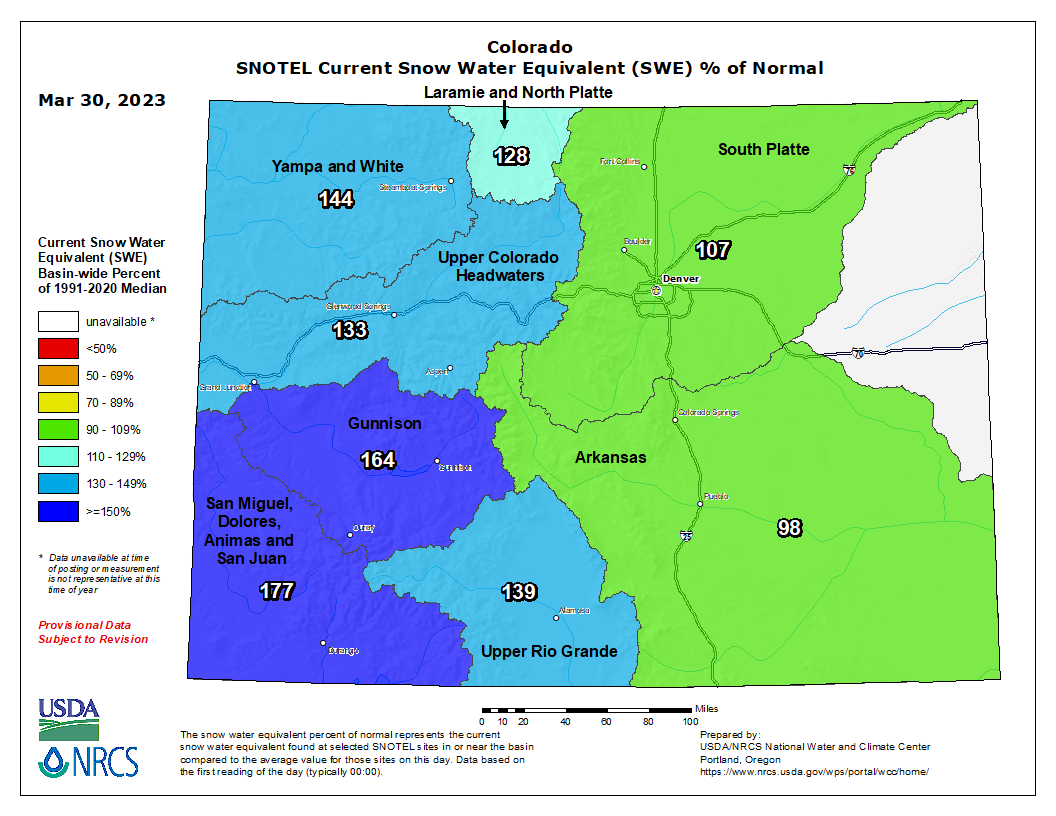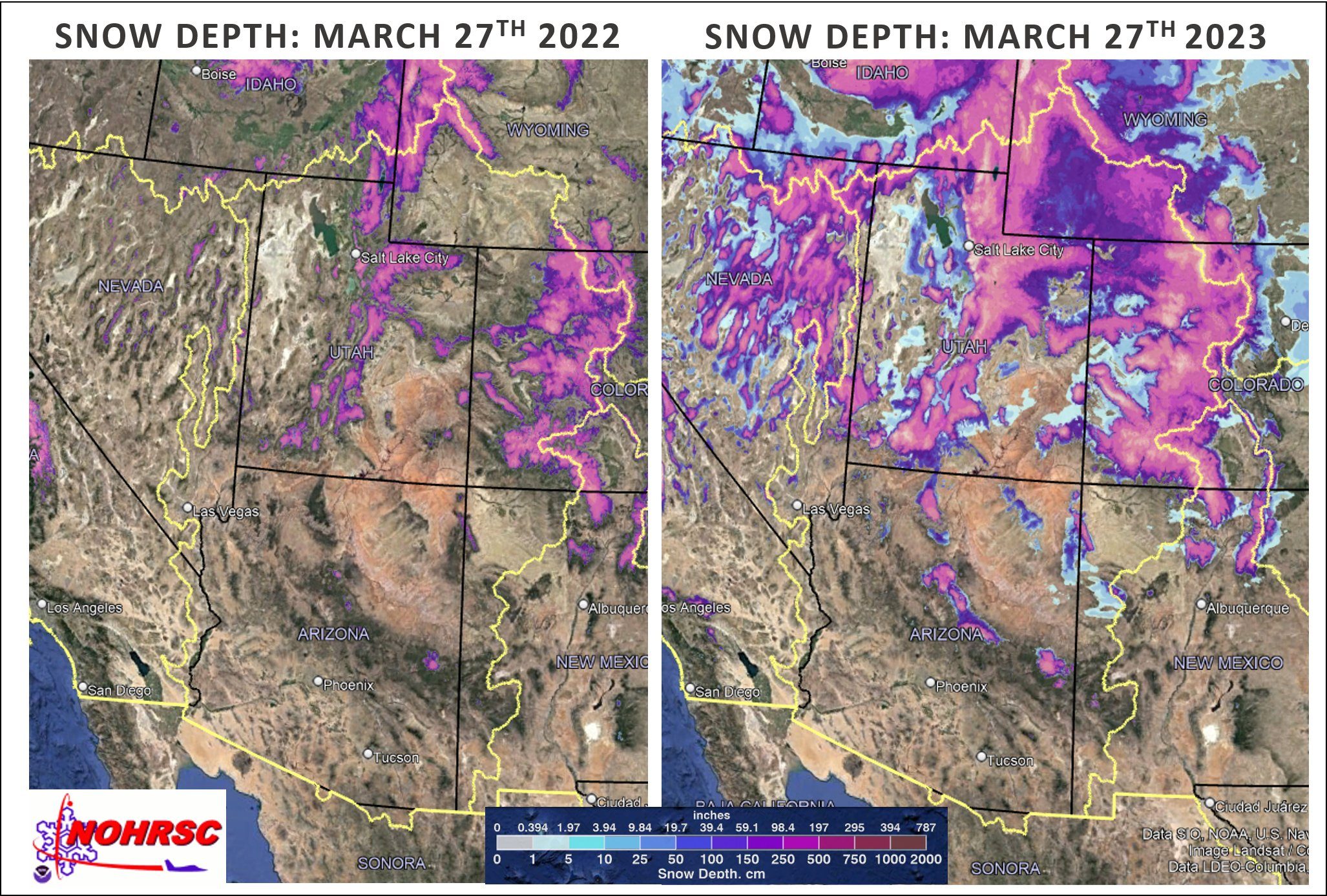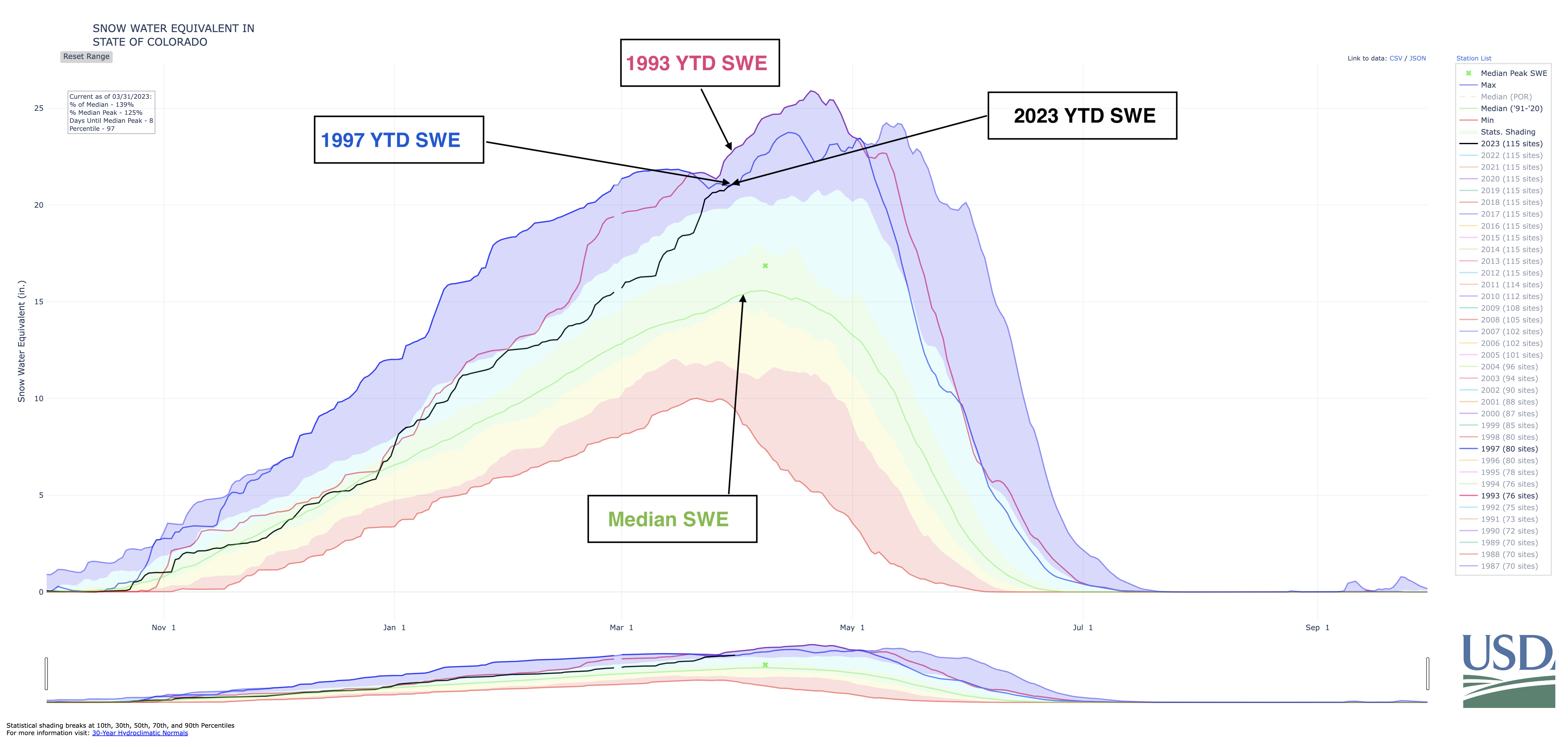Currently, our SWE is on par with the winter of 1997, only to be bested by the winter of 1993, meaning that it has been 30 years since we have seen this much water content in our winter snowpack. To say this winter has been historic isn’t a far cry, and it’s certainly a relief for Colorado considering the drought conditions we have experienced the past couple of years. Now the question becomes what does all of this snow mean for the upcoming spring and summer months?
On average our snowpack peaks around April 8th, so we still have a week left to gain additional ground in terms of the SWE in our high country snowpack. Once things peak, we will likely see our annual runoff come in a couple of stages depending on the overall weather patterns we see move across Colorado. In typical years the first round of runoff comes with the melting of our lower elevation and valley snow, which will provide an initial bump in our state's river flows. After this peaks, the remaining snow will come down at the mercy of temperatures at higher elevations, which can create an abrupt or gradual melt of the remaining high country snow. Either scenario inherently has its drawbacks. An abrupt melt will create the potential for flooding in certain river basins, as well as short-term hazards to recreational river users. A slower melt, similar to what we experienced in 2016, will create a longer window for high river flows and less-than-ideal fishing conditions for a longer period of time. The good news is that either option will aid in the flushing of our rivers to remove unwanted sediment, which in turn will create healthier ecosystems for both fish and insects. Additionally, the likelihood that we will experience the low water and high water temperatures we have seen in the past couple of summers is unlikely, meaning no river closures and concern for the health of our fisheries through the summer months.
At this point, it is too early to tell how our runoff season is going to play out, but it is safe to say that rivers across the west will benefit greatly from the bounty of snow that is currently sitting in the Rocky Mountains. As our snowpack peaks, and we start to get a better idea of how things are going to play out, I’ll be sure to update our readers will any and all relevant information. In the interim, we are seeing ideal conditions for some early spring fishing, so now is a great time to think about getting out on the water. As always our professional and expert staff stands ready to help whether that be in assisting you with the necessary flies and supplies or having one of our professional guides show you a memorable day on the water. So be sure to stop by either of our store locations or hit us up online for the most up-to-date fishing information available.
Kind regards,
Tucker Ladd
Owner, Trouts Fly Fishing




